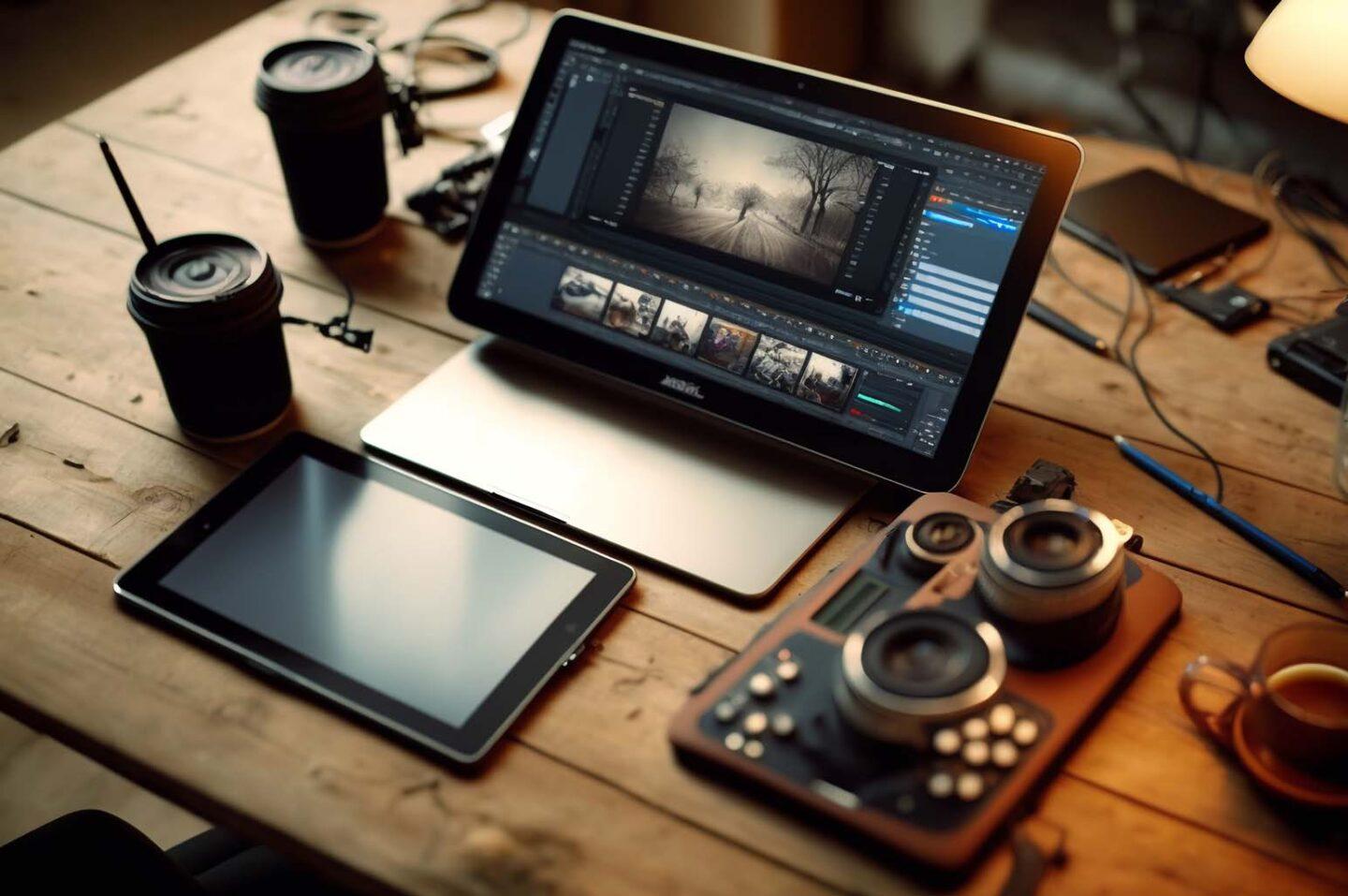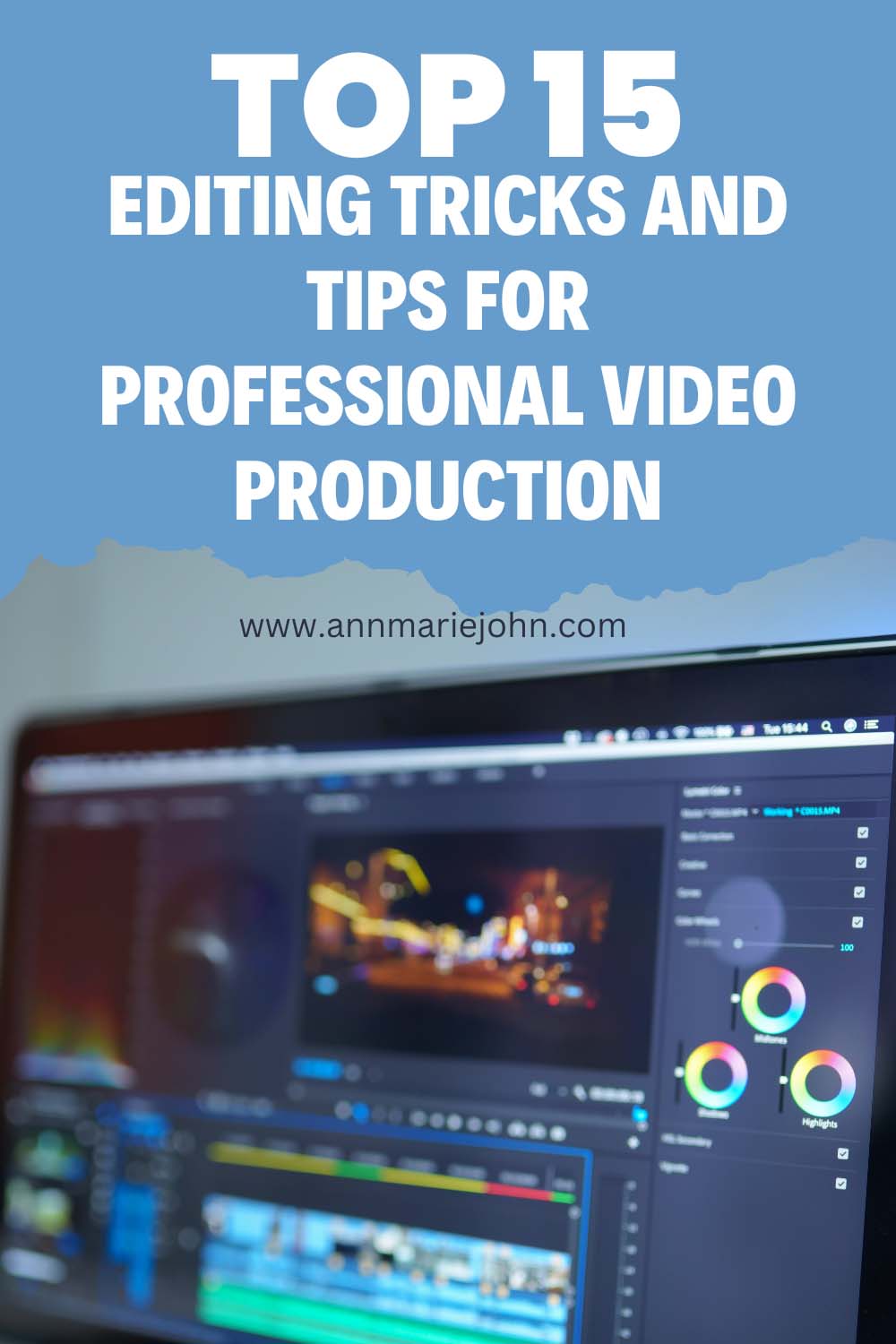Unlock a world of professional video production when you know the tricks! Learn how to edit smarter, faster, and more efficiently with these simple tips.

Video content has become a must-have tool for businesses and creators to engage their audience. However, let’s be honest: editing videos well requires skills. With the right techniques, you can transform raw footage into something awesome. This article shares 15 video editing tips to take your work to the next level.

1. Get the Right Software
The choice of tools you use in editing can have a significant impact on your work. For beginners starting their editing journey, we recommend using user-friendly software like Premiere Elements or iMovie to become acquainted with the basics.
However, for more advanced projects, partnering with professionals can be of immense help. If you are located in the Chicago area, you will find a multitude of excellent video production services in Chicago, both from companies and freelancers. With their years of experience, state-of-the-art equipment, and industry knowledge, they become invaluable partners for your projects.
2. Keep it Short and Sweet
In today’s fast-paced world, people’s attention spans are short. Research shows that 80% of marketers make videos in under 3 minutes. Trim unnecessary content to keep viewers engaged from start to finish. Master being concise but still memorable.
A recent survey revealed that most viewers prefer short videos under 2 minutes. 79% of respondents said ideal videos are less than 2 minutes long. This data reinforces the tip to be brief when creating videos
3. Smooth Scene Transitions
Choppy edits can be disruptive and frustrating. The transition between clips during movement to seamlessly blend scenes. For example, cutting as someone turns their head creates a smoother transition than jarring jumps. Also, cut in close-up reaction shots during chats. It adds energy and keeps things compelling.
4. Use Music to Set Tone
Music evokes emotions and sets moods. Line up transitions and cuts with song beats and cues for super-slick results. While editing, use waveforms to precisely match things up. And only use music you have the right to—avoid legal headaches. Royalty-free resources like PremiumBeat and Envato Elements are great go-tos.
5. Color Grade for Style
Color grading tailors the overall visual vibe, like making it cold with blue hues or cozy with warm earth tones. Set the continuity with correction first before getting creative with grading. Look-Up Tables (LUTs) have cool preset color styles to explore too. It elevates the visual quality of videos.
6. Balance Your Audio
Messy audio levels can ruin otherwise great visuals. Use compression, limiting, and normalization so levels stay consistent across clips. For dialogue, use keyframes to gently lower background music under voices. Stay on top of quality from beginning to end.
7. Don’t Steal Media
Seriously, avoid legal drama by only using stuff you have the right to. Be thorough when reviewing licensing terms for music, footage, sound effects, and graphics. Clearing rights takes time but prevents headaches later. Inspire audiences the right way.
8. Tell an Engaging Story
Editing is fundamentally about storytelling. Look at edits not just technically but also from a narrative perspective. Each scene should logically move the story and get emotions going. Stay tonally consistent and only include relevant B-roll. Let the story guide your editing choices.
9. Maintain Visual Continuity
Shots that don’t make sense together can totally throw viewers off. Apply basic editing rules to achieve smooth transitions between clips. Like, stick to the 180-degree rule so the camera perspective stays consistent across cuts. Match lighting too; disjointed visuals break the story immersion.
10. Optimize Pacing and Transitions
Well-paced videos pull viewers in, scene by scene. Quick cuts build excitement for action. Slow dissolves can set a melancholy mood. Fades transition story beats smoothly. Match the pacing and transitions to the desired tone.
11. Get Feedback Early and Often
Receiving objective feedback before finalizing edits is incredibly valuable. Fresh eyes can catch things that drag, audibility issues, or confusing parts of the story. Be open to critiques from trusted colleagues. Multiple rounds of review will make the video polished.
12. Backup and Save Like Crazy
Nothing’s worse than lost project files and having to start over. Routinely back stuff up on external drives and the cloud. And save versions frequently as you work. Tech glitches happen, but backups and histories avoid full disasters.
13. Take Breaks to Stay Objective
When editing a ton, fatigue sets in. Take regular breaks to recharge. But also step back periodically to rewatch stuff with fresh eyes. You may catch unnecessary bits, jarring transitions, or pacing issues. A new perspective helps make the best calls.
14. Show, Don’t Always Tell
Let visuals do the heavy storytelling when possible. Instead of just people talking about being devastated, briefly show them crying. A well-placed B-roll enhances the story without over-explaining everything. Use the power of visual media fully.
15. Keep Learning
Even experienced editors keep honing their skills. There’s always more to learn about theory, software updates, sound design, VFX, workflow efficiency, and trends. Regularly study tutorials and courses to keep your mastery sharp. Great work comes from constant improvement.
Editing gives endless chances for creativity and problem-solving. Learning core best practices allows you to work smarter. But don’t forget that audiences connect with story and emotion. Focus on both editing skills and storytelling impact, and your videos will resonate. With these tips, unleash your potential as an editor!
Frequently Asked Questions
What are good video editing options for beginners?
Beginners often find tools like Premiere Elements, iMovie, Filmora, and Pinnacle Studio more accessible than advanced options like Premiere Pro and Final Cut Pro. Focus on picking something that aligns with where you’re at now.
Where can I find royalty-free media options?
Great places for royalty-free stock media include PremiumBeat, Envato Elements, Storyblocks, Pond5, Shutterstock, and Adobe Stock. Just be sure to closely check usage rights.
How do I avoid jarring cuts between clips?
Cutting during movement rather than static shots makes seamless transitions between scenes. You can also use brief close-up reaction shots to spice up long convos instead of just standard back-and-forth cutting. Maintaining logical flow and pacing also smoothes editing.
In Conclusion
Mastering video editing takes time and practice. However, learning core techniques opens many creative doors. Evaluate your goals and current skills. Choose editing software that supports your journey. Embrace the process of constant learning and improvement. Relish opportunities to flex your creative muscles. Stay passionate about the power of visual storytelling. Let these tips guide you toward polished, professional, and impactful video work. With the right mindset and dedication, your skills will grow steadily. Your unique creative voice will come through. You may even surprise yourself by how captivating the videos you craft can be.
